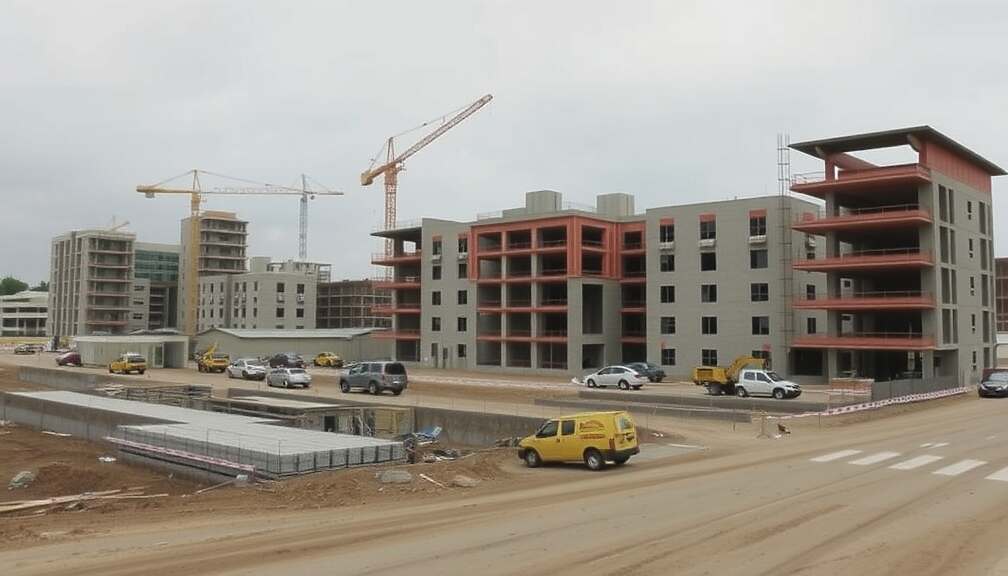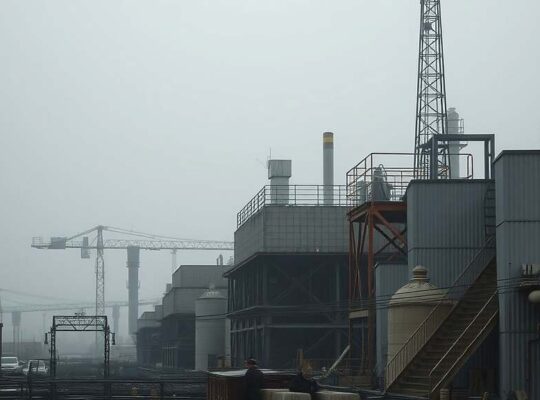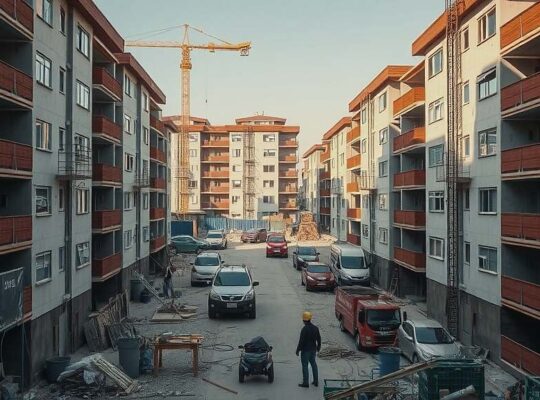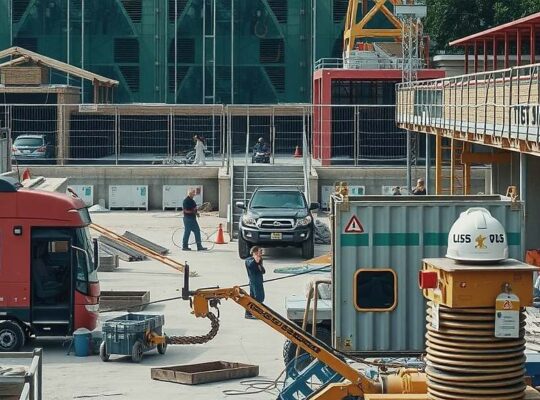Recent data released by the Federal Statistical Office (Destatis) paints a complex and potentially concerning picture of Germany’s construction sector. While August 2025 saw a calendar- and seasonally-adjusted rise of 2.4% in real (inflation-adjusted) new orders compared to July 2025, a closer examination reveals significant disparities and a worrying trend of declining turnover.
The surge in orders was largely driven by a substantial 11.5% increase in high-rise construction projects. However, this positive development was counterbalanced by a 5.0% decrease in orders for civil engineering, highlighting a potential shift in investment priorities and raising questions about the long-term health of infrastructure development. A three-month comparison (June-August 2025) demonstrates an overall decline of 3.2% in real new orders compared to the preceding three months, suggesting a loss of momentum despite the August uptick, with civil engineering experiencing a particularly sharp drop of 7.6%.
Compared to August 2024, real, calendar-adjusted new orders showed a marginal increase of only 0.1%, a tepid performance considering earlier projections. High-rise construction provided the primary boost, climbing 9.2%, while civil engineering again registered a decline, this time of 7.6%. Nominal orders, excluding inflation adjustments, were slightly above the previous year’s level (0.3%), but the underlying real-term weakness remains a significant cause for concern.
The most worrying data point is the decline in turnover. Real turnover in the construction sector was 5.0% lower in August 2025 compared to August 2024. Nominally, turnover shrunk by 2.7%, reaching €9.9 billion. While cumulative figures for the first eight months of 2025 show a real increase of 1.0% and a nominal increase of 3.5%, these early gains are being eroded by the recent performance and could signal a slowdown in the broader economy.
The data also reveals that the number of people employed in the construction sector increased by 1.4% year-on-year. This rise in employment, juxtaposed with the falling turnover, suggests potential issues with productivity or an inability to translate increased staffing into higher revenue, further complicating the overall assessment.
Analysts are now scrutinizing these figures to discern the root causes. Possible factors include rising interest rates dampening investment, material cost volatility, ongoing supply chain disruptions and potentially, a shift in government spending priorities favoring other sectors. The persistent weakness in civil engineering orders, in particular, is drawing increased political attention, prompting calls for a reassessment of long-term infrastructure planning and potential stimulus measures to avoid a more substantial downturn within a critical industry.












